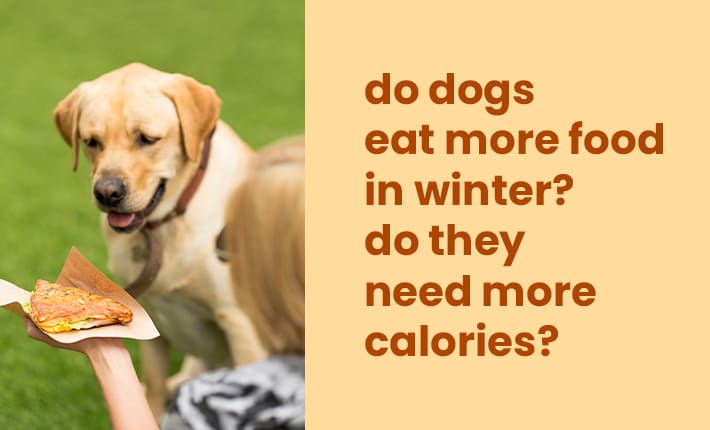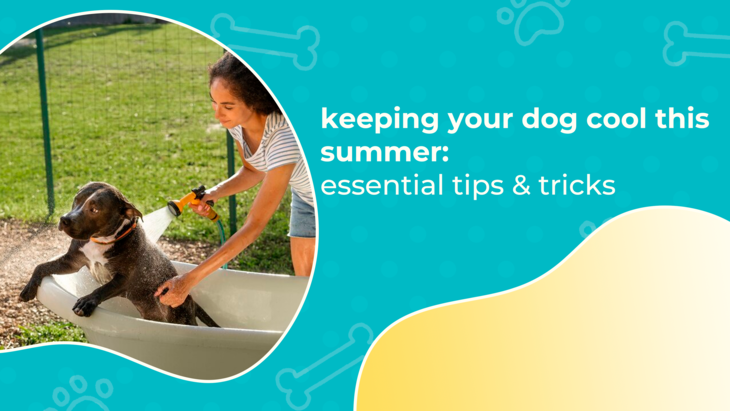Due to their pain in the colder weather, owners are less likely to exercise their dogs as the temperatures drop. Less exercise results in lower calorie burn. Do Dogs Eat More Food in Winter? Dogs need fewer dietary calories and less food as their caloric expenditure decreases.
Feeding the same amount of food can lead to unhealthy winter weight gain.
But what about the dog kept outside throughout the chilly winter? All species, including humans, have a fundamental biological need to keep their core body temperatures constant. This can be accomplished by shivering. However, shivering burns a lot of calories. In the cold, calorie expenditure rises even when you're not shuddering.
The best approach to keep your dog at a healthy weight is to keep track of their food intake and weight to see what changes need to be made. Your dog's routines and size will have a big impact on how many calories he needs each day.
How To Monitor Calorie Intake of Dogs During Winters?
Dense hair and fat deposits provide insulation and reduce calorie consumption when shivering. Additionally, active animals and those who have adapted to the cold are better protected against the numbing effects of the cold.
According to studies, dogs exposed to cold temperatures require two to three times as many calories as they would in a temperature range closer to room temperature. The increase in calories increases fat storage and insulation and reduces or makes up for the calories lost during shivering and non-shivering. These animals lose weight when the extra calories are removed.
Cold-exposed pets also have different metabolism. They prefer using fat for metabolism over glucose. In the winter, dogs kept outside require additional dietary fat. This can entail switching from the dog food they are currently eating to one with more fat.
Need for Reducing Food Intake During Winters
Less daylight means fewer opportunities for exercise, which has the same impact as a drop in temperature. Owners are less likely to give their animals the same amount of exercise as they did when there was more daylight. Less exercise results in lower calorie burn. Reduced food production is required.
However, the reduction in daylight hours also affects your dog's metabolism in other ways. The dog brain detects the impending winter via shorter days. To decrease metabolism and reduce calorie expenditure, this triggers hormonal changes.
Petscape provides pet care services to cats, dogs, fishes, rabbits, and tortoises. They guide pet parents on the food diet and other measures for the pet to lead a healthy life.
Usual Dog Diet
All year long, dogs should be fed according to their BCS or Body Condition Score. It has been demonstrated that the technique correlates with the most advanced X-ray technology for calculating the percentage of body fat in pets. The suggestions for feeding dogs throughout seasonal changes that follow only apply to healthy pets.
Pet care services and tips to keep your pets well-groomed and healthy during winter. No matter the time of year, any dog or cat with a BCS of 6/9 or more needs a carefully managed weight loss program. Reduce the quantity you feed your dog by 10% if, over the winter, they go from a 4-5/9 to a 6/9. Increase feed in 10% increments until your dog is back to a 4-5/9 if they fall to a 3/9.
Impact of Cold Climate and Other Changes
Your dog is affected by seasonal changes in addition to cold weather. Short daylight also impacts their metabolism. Your dog's metabolism will start to slow as the days become shorter. This is a holdover from when dogs spent most of their time outside and required additional layers of fat to keep warm during the chilly, dark days.
So your dog may gain a bit of excess weight even if you keep him inside in a climate-controlled area. You should keep an eye out for weight gain and modify your dog's diet if necessary.
While some dogs may lose weight, others might gain it. Every dog will have different requirements.
The amount of exercise your dog will receive is a further consideration. You should consider boosting your dog's calorie intake if you exercise him as usual with walks or outside play. However, boosting your pet's caloric intake could result in your dog gaining weight if you believe the weather will keep you indoors with little to no movement.
Several factors determine whether or not you need to change your dog's diet for the winter, such as the amount of time your dog spends outdoors each day and other daily behaviors. Your dog may probably shiver if he spends a lot of time outside in freezing weather.
In this case, it is recommended that you feed your dog a little extra throughout the winter. Your dog will burn off calories faster than usual because shivering can burn many calories. However, if your dog spends the majority of the winter season indoors in a climate-controlled facility, more calories might not be required.
You may face several difficulties during the winter as well as your dog. Remember that your dog can be going through the same struggle as you struggle to overcome your winter sluggishness. Changes in your dog's body composition could result from changes in metabolism. Consult your veterinarian, make a nutrition plan, and be ready to keep your dog at a healthy weight during the winter.







Post Comments